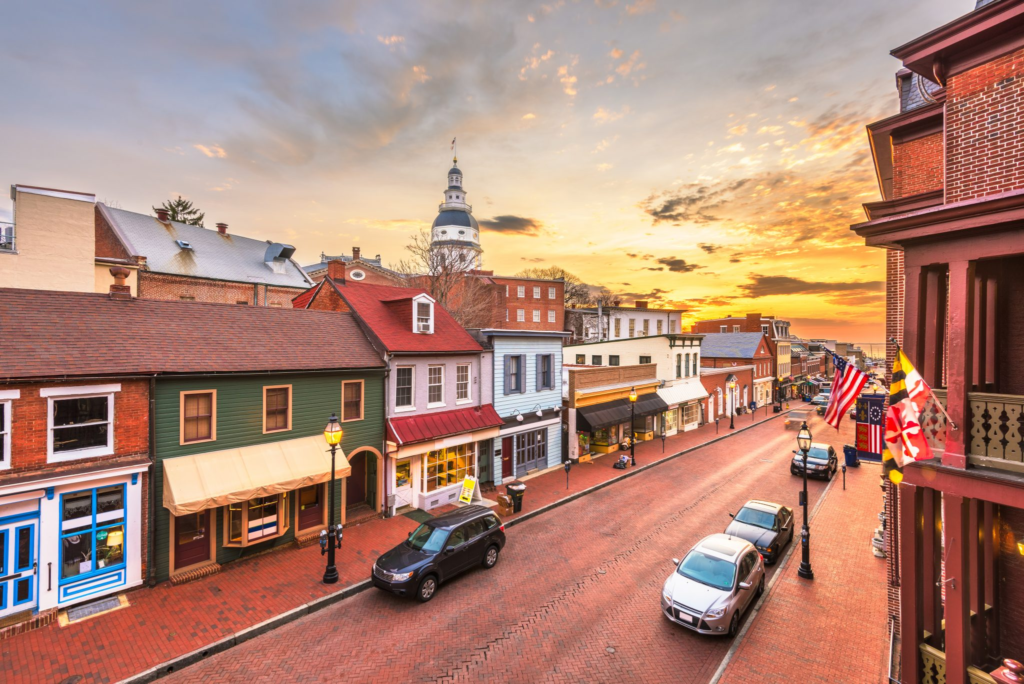The revival of American small towns is a growing trend, fueled by creativity, community spirit, and new ways of working. Over the past decade, many small towns in the United States have experienced renewed energy and growth after years of economic struggle or population decline. What’s behind this revival? A combination of arts, crafts, and the rise of remote work has created fresh opportunities for these communities to thrive.
In this article, we explore the revival of American small towns through inspiring case studies, showing how arts and crafts have brought people together and how remote work has allowed people to live and work outside big cities. This trend is not just about economics—it’s about culture, quality of life, and the reimagining of what small-town America can be.
Why the Revival of American Small Towns Matters
For many decades, small towns in the U.S. have faced challenges. Factories closed, young people moved to big cities, and downtown areas struggled to stay alive. But today, we see a change. People are rediscovering small towns for their charm, lower cost of living, and tight-knit communities.
This revival matters because it supports sustainable living, preserves unique local cultures, and strengthens the country’s social fabric. When small towns thrive, they offer an alternative lifestyle that balances work, creativity, and community.

How Arts and Crafts Spark the Revival of American Small Towns
Arts and crafts play a crucial role in revitalizing small towns. Local artists, crafters, and makers often become the heart of community renewal. Their work attracts visitors, creates jobs, and fosters pride.
Building a Creative Economy
Small towns have used arts and crafts to build what is called a “creative economy.” This means jobs and income come from creative activities like pottery, woodworking, painting, and handmade textiles. These activities support local businesses, shops, and galleries.
For example, Paducah, Kentucky, became known as a National Quilt City by attracting quilters from across the world. This brought in tourism and new businesses. Beaufort, South Carolina, revived its waterfront area with art galleries and craft shops, turning it into a cultural destination.
Community Engagement Through the Arts
Arts and crafts also bring people together. Local art fairs, craft markets, and workshops encourage social connections. This sense of belonging is a key part of the revival.
Remote Work: A Game Changer for Small Town Revival
The rise of remote work has been a major factor in the revival of American small towns. The COVID-19 pandemic accelerated remote work, showing many people that they can work effectively from anywhere. This opened the door for moving out of crowded cities.
Why Remote Work Benefits Small Towns
Remote work benefits small towns in several ways:
- Housing is often more affordable.
- Quality of life improves with less traffic, more nature, and close communities.
- Towns gain access to new talent as remote workers bring skills and income.
Towns That Have Benefited From Remote Work
Asheville, North Carolina, is known for its arts scene and natural beauty and has attracted many remote workers who enjoy the local culture. Boulder, Colorado, with its outdoor lifestyle and strong internet infrastructure, has seen an influx of tech and creative professionals working remotely.
Case Study 1: Paducah, Kentucky – Quilts, Crafts, and Community
Paducah’s story is a classic example of how arts and crafts can revive a small town. In the early 2000s, the city was struggling economically. Local leaders partnered with artists and quilt makers to create the National Quilt Museum and organize the American Quilter’s Society QuiltWeek.
This focus on quilting attracted visitors, new residents, and businesses. The arts district expanded, with galleries and studios filling historic buildings. The city’s investment in arts created jobs and boosted tourism. Today, Paducah is known as a vibrant arts community with a strong economy.
Case Study 2: Marfa, Texas – Remote Work Meets Artistic Vision
Marfa, Texas, started as a small, quiet desert town. It became famous in the 1970s when artist Donald Judd moved there and established an art foundation. Over time, Marfa became a magnet for artists and tourists.
More recently, Marfa has attracted remote workers looking for a slower pace but a strong creative vibe. The town has upgraded its internet infrastructure and encourages entrepreneurs. Local craftspeople and artists collaborate with newcomers, creating a dynamic, sustainable community.
Case Study 3: Floyd, Virginia – Craft Breweries and Remote Workers
Floyd, Virginia, is a small town that used its love for craft beer and music to boost its economy. Known for the Floyd Country Store and live music venues, the town attracted visitors who also discovered local crafts and artisans.
Remote workers drawn to Floyd’s lifestyle and community helped grow the town’s population. They also supported local businesses, such as coffee shops and craft breweries. Floyd shows how blending arts, crafts, and remote work can strengthen small-town economies.

How Small Towns Can Encourage Revival Through Arts, Crafts, and Remote Work
For small towns looking to replicate this success, here are some key strategies:
- Invest in infrastructure: Improve internet access to attract remote workers. Renovate historic buildings to create arts districts and studio spaces.
- Support local artists and crafters: Provide grants or low-cost spaces. Organize festivals, markets, and workshops.
- Market the town’s unique identity: Highlight local culture, history, and natural beauty. Use social media and tourism websites to attract visitors.
- Foster a welcoming community: Encourage collaboration between long-time residents and newcomers. Promote events that bring people together.
The Future of American Small Towns: Blending Tradition and Innovation
The revival of American small towns is an ongoing process. Arts and crafts preserve tradition, while remote work introduces new ways to live and earn a living. Together, they create communities that are both rooted in history and ready for the future.
Small towns offer a promising alternative to urban life, especially for people seeking balance, creativity, and connection. By continuing to support artists, crafters, and remote workers, these towns can build resilient economies and vibrant cultures for years to come.
Conclusion
The revival of American small towns through arts, crafts, and remote work is more than a trend—it’s a movement toward sustainable, fulfilling living. Case studies from Paducah to Marfa and Floyd illustrate the power of creativity and flexibility to breathe new life into communities once thought to be fading.
Whether you’re an artist, a remote worker, or someone who loves small-town charm, these stories show that revival is possible. With vision, investment, and community spirit, small towns across America can continue to thrive in the 21st century.
Do Follow USA Glory On Instagram
Read Next – How U.S. Financial Institutions Handle Climate Risk: Insurance, Lending & Disclosure






